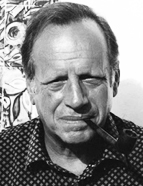

His career in criticism and essays began when he was still a student at Colégio Moderno in 1942 (very early, therefore), gaining increasing substance and consistency from the late 1940s onwards, without ever slowing down. A summary of this can be found in the preface dated 1959 to the volume Vinte poetas contemporâneos [Twenty Contemporary Poets] (1960, 2 nd revised and expanded edition, 1979), consisting in part of articles he had published in Diário Popular : in this introduction, he questions the limits of critical practice in the press, and establishes as guidelines ‘synthesis’ and ‘analysis’ of texts, following the lessons of Curtius, Croce, Dámaso Alonso, Spitzer and other authors (such as the Russian formalists and Ingarden) to ground a practice governed by a conception of methodological rigour derived from stylistics, but which always remains current. The historical context, which he considers indispensable for understanding the works studied, is combined with the need for critical work to “have a deep knowledge of linguistic norms and the general aspects of language” in order to “understand and appreciate the specific use that the creator, the poet, makes of them” (p.19). In this 1959 preface, seminal for issues evident throughout his essays, he affirms the importance he believes must be given to tradition (especially national tradition, but not limited to it), both of authors and of structural and formal issues, summarised in the “diachronic consideration of structure and genre”, of themes and motifs, of myths and archetypes, of “connections between the work and social life, cultural history, music, and the visual arts” (p. 20). The historicity of literature is a principle of the utmost importance already in this 1959 preface; in turn, in 1979 (date of the second edition of the 1960 book), he maintains judgements that are perhaps less accurate than those he had previously made, viewing them from the perspective that “Heraclitus’ river also flows through the fields of criticism” (p.25) – in a rare attitude of humility and consistency.
This work is financed by national funds through FCT - Foundation for Science and Technology, I.P, in the scope of the projects UIDB/04311/2020 and UIDP/04311/2020.
